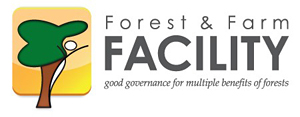
Share
Related Links
Forest and Farm Facility website
Video interviews from the Facility (Youtube)
Blog: Myanmar: Could an unusual yam help help the march of community forestry? (IIED, May 2013)
Growing Forest Partnerships (2009-2012)
Keywords
Authors/Partners
IIED, IUCN, Forest and Farm Facility
Building Partnerships with the Forest and Farm Facility
CHALLENGE
In the last decade two programs helped make forest policy processes more inclusive.
- The National Forest Program Facility (NFP), hosted by the United Nations Food and Agriculture Organization, worked for 10 years in 80 partner countries. It aimed to foster country leadership and strengthen the participation of stakeholders in developing and implementing national forest programs. About 75% of the 900 grants it delivered went to civil society organizations; the remainder supported central forestry agencies.
- The Growing Forest Partnerships (GFP), financed by the World Bank, worked for three years in five of those partner countries. It helped create a strong network of local forest stakeholders and linked these networks with three global alliances of forest right holders. Those countries also benefited from improved collaboration between the various partners implementing these programs: FAO, International Union for Conservation of Nature (IUCN), International Institute for Environment and Development (IIED) and the World Bank.
Although these programs ended in 2012, there is an ongoing need for strong and equitable organizations and networks. Such organizations can help smallholders, women groups, communities and Indigenous Peoples make their voices heard in policy making processes at local, regional, national and global levels on forest and farm related issues, and more readily access financing and investments for forest and farm development.
The Forest and Farm Facility was launched in September 2012 to take this work forward. The Facility is expected to support national and sub-national governments to establish multi-sectoral platforms (through dialogues, information and capacity building) to better-coordinate the various ministries, private sector and civil society stakeholders involved in, or affected by, policies and activities related to forest and farm management like food security, SFM, climate change, bio energy and water. The Facility will also help organize and strengthen communities and small producers at the local level.
APPROACH
The objectives of the Facility are to promote equitable governance mechanisms; improve coordination among multiple funding streams; enhance skills and access to market opportunities; and contribute to creating public awareness.
While core funding has been mobilized for the Facility’s startup phase, these resources are quite limited and provide few opportunities for partners who have had long engagement through the GFP to continue collaborating. The objective of this activity is to facilitate coordination among the main organizations that will be involved with activities associated with the Forest and Farm Facility and to provide a mechanism to finance incremental and follow on activities which improve collaboration. Coordination among the key organizations (Facility, IIED, and IUCN) will be instrumental to effectively and efficiently implement activities identified by the Facility.
RESULTS
Since December 2012, IIED and IUCN have been working closely with members of the Facility management team on a range of issues, from scoping and launch visits in six pilot countries, to setting up the M&E strategy in each country and for the Facility more broadly.
The six initial pilot countries are as follows :
- Latin America: Guatemala and Nicaragua
- Africa: Gambia and Liberia
- Asia: Myanmar and Nepal
This activity is ongoing. Findings will be shared on this page when they become available. Follow us on twitter or join our mailing list for regular updates.
For stories and updates on related activities, follow us on twitter and facebook , or subscribe to our mailing list for regular updates.
Author : IIED, IUCN, Forest and Farm Facility
Last Updated : 06-15-2024








